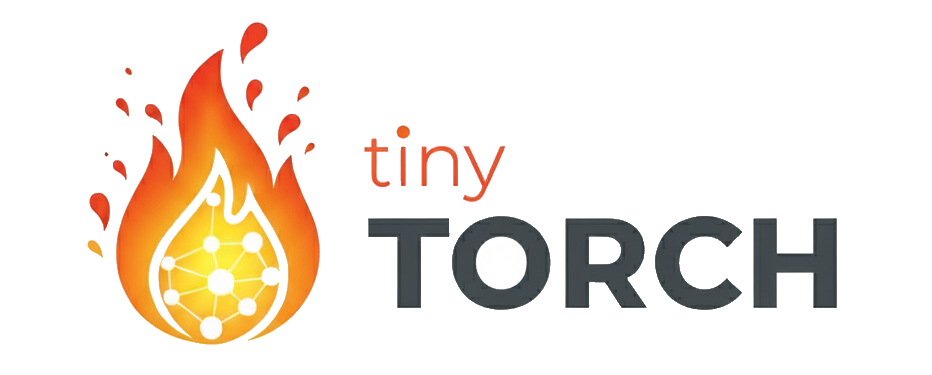Track Your Progress#
Monitor Your Learning Journey
Track your capability development through 16 essential ML systems skills
Purpose: Monitor your capability development through the 21-checkpoint system. Track progress from foundation skills to production ML systems mastery.
Track your progression through 21 essential ML systems capabilities. Each checkpoint represents fundamental competencies you’ll master through hands-on implementation—from tensor operations to production-ready systems.
How to Track Your Progress#
🎯 Capability-Based Learning
Use TinyTorch’s 21-checkpoint system to monitor your capability development. Track progress from foundation skills to production ML systems mastery.
📖 See Essential Commands for complete progress tracking commands and workflow.
Your Learning Path Overview#
TinyTorch organizes learning through four major phases, each building essential ML systems capabilities:
📖 See Complete Course Structure for the full learning timeline and detailed module descriptions.
Student Learning Journey#
Typical Student Progression#
Week 1-2: Foundation capabilities (Environment, Tensors, Activations)
Week 3-4: Core learning systems (Layers, Losses, Autograd)
Week 5-6: Training and optimization (Optimizers, Training loops)
Week 7-8: Advanced architectures (Spatial processing, Attention)
Week 9-12: Production systems (Profiling, Optimization, Deployment)
Study Approaches#
Full Implementation (8-12 weeks): Build every component from scratch
Guided Study (4-6 weeks): Study solution notebooks with implementation exercises
Quick Exploration (2 weeks): Focus on key concepts with provided implementations
📖 See Quick Start Guide for immediate hands-on experience with your first module.
21 Core Capabilities#
Track progress through essential ML systems competencies:
Capability Tracking
Each checkpoint validates mastery of fundamental ML systems skills.
Checkpoint |
Capability Question |
Modules Required |
Status |
|---|---|---|---|
00 |
Can I set up my environment? |
01 |
⬜ Setup |
01 |
Can I manipulate tensors? |
02 |
⬜ Foundation |
02 |
Can I add nonlinearity? |
03 |
⬜ Intelligence |
03 |
Can I build network layers? |
04 |
⬜ Components |
04 |
Can I measure loss? |
05 |
⬜ Networks |
05 |
Can I compute gradients? |
06 |
⬜ Learning |
06 |
Can I optimize parameters? |
07 |
⬜ Optimization |
07 |
Can I train models? |
08 |
⬜ Training |
08 |
Can I process images? |
09 |
⬜ Vision |
09 |
Can I load data efficiently? |
10 |
⬜ Data |
10 |
Can I process text? |
11 |
⬜ Language |
11 |
Can I create embeddings? |
12 |
⬜ Representation |
12 |
Can I implement attention? |
13 |
⬜ Attention |
13 |
Can I build transformers? |
14 |
⬜ Architecture |
14 |
Can I profile performance? |
14 |
⬜ Deployment |
15 |
Can I accelerate algorithms? |
15 |
⬜ Acceleration |
16 |
Can I quantize models? |
16 |
⬜ Quantization |
17 |
Can I compress networks? |
17 |
⬜ Compression |
18 |
Can I cache computations? |
18 |
⬜ Caching |
19 |
Can I benchmark competitively? |
19 |
⬜ Competition |
20 |
Can I build complete language models? |
20 |
⬜ TinyGPT Capstone |
📖 See Essential Commands for progress monitoring commands.
Capability Development Approach#
Foundation Building (Checkpoints 0-3)#
Capability Focus: Core computational infrastructure
Environment configuration and dependency management
Mathematical foundations with tensor operations
Neural intelligence through nonlinear activation functions
Network component abstractions and forward propagation
Learning Systems (Checkpoints 4-7)#
Capability Focus: Training and optimization
Loss measurement and error quantification
Automatic differentiation for gradient computation
Parameter optimization with advanced algorithms
Complete training loop implementation
Advanced Architectures (Checkpoints 8-13)#
Capability Focus: Specialized neural networks
Spatial processing for computer vision systems
Efficient data loading and preprocessing pipelines
Natural language processing and tokenization
Representation learning with embeddings
Attention mechanisms for sequence understanding
Complete transformer architecture mastery
Production Systems (Checkpoints 14-15)#
Capability Focus: Performance and deployment
Profiling, optimization, and bottleneck analysis
End-to-end ML systems engineering
Production-ready deployment and monitoring
Start Building Capabilities#
Begin developing ML systems competencies immediately:
Begin Capability Development
Start with foundational capabilities and progress systematically
15-Minute Start → Begin Setup →Track Your Progress#
To monitor your capability development and learning progression, use the TITO checkpoint commands.
📖 See Essential Commands for complete command reference and usage examples.
Approach: You’re building ML systems engineering capabilities through hands-on implementation. Each capability checkpoint validates practical competency, not just theoretical understanding.
